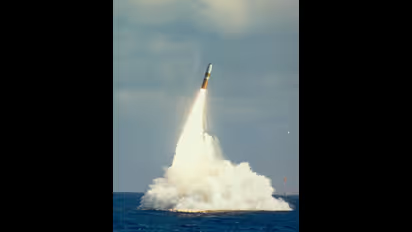'Significant event, very concerning too': Top US General on China's recent test hypersonic missile

Synopsis
The chairman of the Joint Chiefs of Staff, Mark Milley, disclosed for the first time the Chinese test of a nuclear-capable missile that would be extremely difficult to defend against.
According to the Pentagon's top general, China's recent test of an earth-circling hypersonic missile is comparable to the Soviet Union's startling launch of the world's first satellite, Sputnik, in 1957 superpowers' space race. The chairman of the Joint Chiefs of Staff, Mark Milley, disclosed for the first time the Chinese test of a nuclear-capable missile that would be extremely difficult to defend against. Milley told the media that what they witnessed was a major and alarming test of a hypersonic missile system. He went on to say that while it isn't quite a Sputnik moment, he believes it is incredibly near.
The US Department of Defense has previously denied confirming the test, which the Financial Times initially reported on October 16. According to the publication, the August test missile took Washington off guard. According to the Financial Times, the missile circled the Earth at a low height at a velocity of more than five times the speed of sound, but it missed its target by more than 30 kilometres (19 miles). China refuted the news, claiming that it was only a standard test of a reusable space rocket.
Also Read | India successfully tests 5,000 km range Agni 5 missile
Because they fly lower and hence are more complicated to detect than ballistic missiles, can reach targets faster, and are agile, hypersonics represent the new frontier in missile technology. This makes them more hazardous, especially if they are armed with nuclear weapons. The United States, Russia, China, and North Korea have tested hypersonic technology, and numerous countries are working on it.
Meanwhile, underpinning the commitment to 'No First Use', India on Wednesday successfully tested surface to surface ballistic missile Agni V from APJ Abdul Kalam Island in Odisha. Using a 3-stage solid fuelled engine system, the missile has the capability to strike targets at ranges up to 5,000 kilometres with a very high degree of accuracy.
Also Read | 'Strategic weapon': North Korea fires new hypersonic missile as it enhances weapon systems